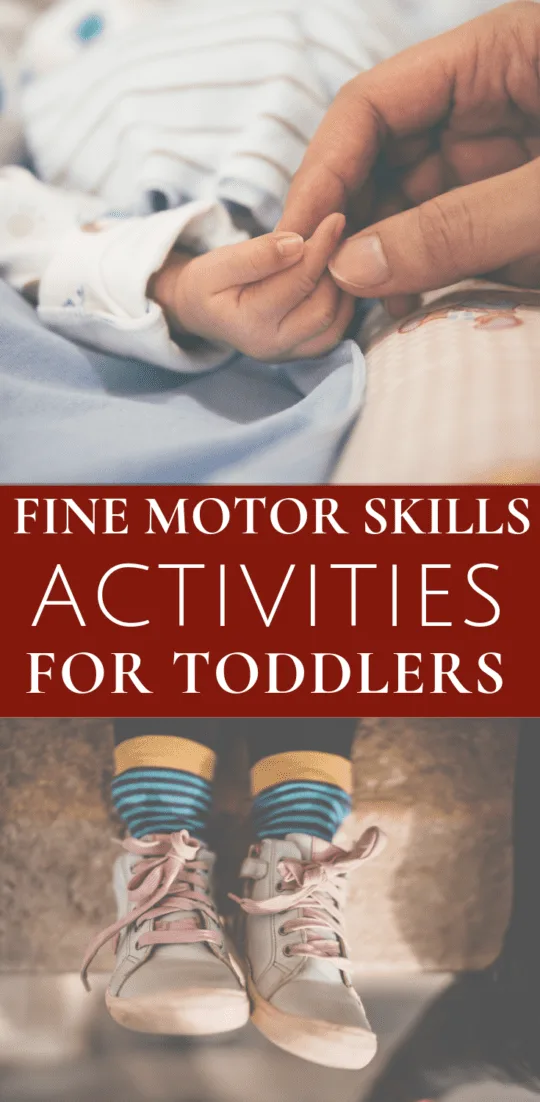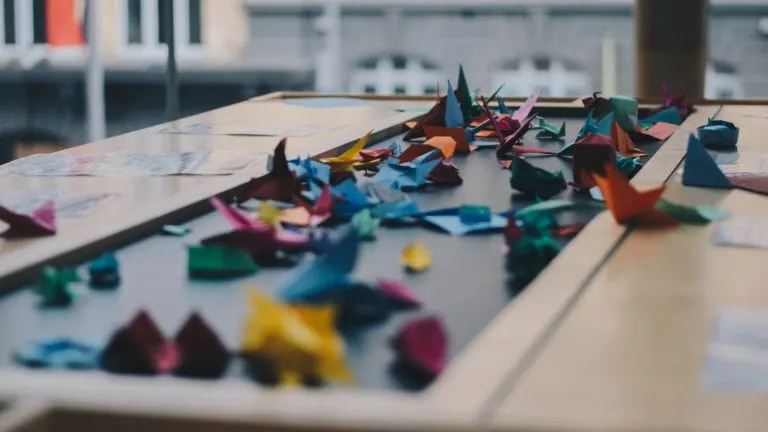Most parents and caregivers know the importance of reading to kids, teaching them the alphabet, and helping them learn to count. Most know that gross motor skills are important to development, too. Fine motor skills, or small muscle skills, are just as important in development and can often be overlooked by caregivers.
As you know, building fine motor skills starts at an early age. Furthermore, it allows little ones to set the foundations for learning, coordination, and performing everyday tasks. These tasks can involve fun activities for kids! No torture is involved!
What Are Fine Motor Skills?
Fine motor skills involve the ability to make small movements with the hands, fingers, and arms. Then, those actions are coordinated with the eyes. In order to hone these abilities, children need a certain amount of strength, dexterity, and control.
Related Read: Occupational Therapy – Fine Motor Activities for Kids
As I mentioned above, fine motor skills involve the use of the smaller muscle of the hands. Activities such as using pencils, cutting with scissors, and constructing with legos, getting dressed with buttons, and opening small containers are examples of small muscle tasks.
How do we use these skills in everyday life?
Here are a few activities that require fine motor coordination:
- Getting dressed
- Feeding yourself
- Writing
- Using scissors
- Grooming
- Turning pages in a book
- Using a computer
The development of these skills helps children perform routine tasks. Furthermore, it predicts academic success. Research shows that working on fine motor skills early in life helps the brain make connections that support cognitive performance.
Related Read: Easy Fine Motor Skills Activities to Do at Home with Infants & Toddlers
Children with adept motor skills may navigate their environments better than other kids. This gives them experiences that set the stage for future learning. Some evidence shows that these skills are more important than memorizing letters or learning numbers for academic learning.

Fine Motor Skills for Toddlers
Toddlers have a chance to develop their small motor coordination every day. Being able to do activities that involve smaller muscles gives them more independence. Toddlers with strong development in this area can do tasks such as:
- Open doors
- Use a zipper
- Button their clothing
- Wash their hands
- Brush their teeth
Activities for Toddlers
Kids will need these skills once they are in school. Preparing toddlers by encouraging their dexterity can make them feel more comfortable in preschool and kindergarten. Some fine motor skills examples in the learning environment include:
- Gluing and pasting
- Drawing and coloring
- Building towers with blocks and other items
- Completing puzzles
Many of the activities that toddlers enjoy doing enhance these skills. Little ones that have an obsession with dumping out their toys are integrating different muscle movements. You can foster this by asking them to put the toys back in the bucket before spilling them out again.
You may notice that toddlers enjoy using their own utensils while eating. Although this use can be messy, it should be encouraged.
Be patient and try to avoid jumping in to help toddlers eat. Give them foods that are cut into small pieces and let them feed themselves with their hands. Doing this helps them develop their pincer grasp.
What is the pincer grasp?
The pincer grasp is a fine motor skill involving the coordination of the thumb and index finger to grasp and manipulate objects. It is called the “pincer” grasp because it resembles the movement of a crab’s claw or pincers.
The pincer grasp typically develops in infants between the ages of 9 to 12 months as their fine motor skills progress. Initially, infants use a whole-hand grasp, where they grasp objects by enclosing them with their entire hand. As they refine their motor skills, they begin to develop the pincer grasp.
Two Types of Pincer Grasp
- Radial-Digital Grasp: This is the earlier stage of the pincer grasp, where the infant uses the pad of the thumb against the side of the index finger to pick up and hold small objects. This grasp involves the coordination of the thumb’s flexion and the index finger’s stabilization.
- Pincer Grasp: This is the more advanced stage of the pincer grasp, typically seen around 10 to 12 months of age. In the pincer grasp, the infant uses the tip of the thumb and the tip of the index finger to hold and manipulate small objects with precision. This refined grasp allows for greater control and dexterity in activities such as picking up small food items or manipulating small toys.
The development of the pincer grasp is essential for a child’s independence and self-care skills. It enables them to engage in activities like self-feeding, holding writing utensils, picking up small objects, and eventually, fine motor tasks like drawing, cutting, and buttoning.
Encouraging activities that promote the development of the pincer grasp, such as playing with small manipulatives, using finger foods, or engaging in arts and crafts with small materials, can support a child’s fine motor skill development and enhance their hand-eye coordination.

Ways to Improve Fine Motor Skill Development
Some children have problems building these skills. If they do, you might notice that they take a long time to draw or color a picture. They get tired quickly when working on a computer or writing. They have trouble cutting paper or don’t like tasks that require small movements.
You don’t have to give children tedious tasks such as writing or using scissors to improve fine motor skills development. In other words, other types of activities may be more engaging for certain age groups. For example, art projects, working with water, and certain kinds of directed play can give kids experience with coordination, grasping, and pinching.
Activities great for strengthening include:
- Using a basting tool with water
- Squeezing water from sponges
- Sponge painting
- Pouring water from containers with different spouts
- “Fishing” for ping pong balls in a bathtub using a net
Other activities involve using toys with knobs, dials, latches, and switches. Similarly, you can make your own toy by stuffing pieces of fabric in a baby wipe container. Little ones love pulling these out and stuffing them back in.

A car wash is another fine motor skill example that gives kids experience with tactile sensations. So, provide toy vehicles, washable paint, a tub of water, a cup, shaving cream, a toothbrush, and a spray bottle. Furthermore, kids can color the cars before cleaning them off.
As they get older, kids can practice sorting using rocks, beads, pom-poms or other small items. Make sure that they’re supervised so that they don’t put the items in their mouths. They can use their fingers, tweezers or chopsticks to move the objects into ice cube trays and other small containers.
If you’re worried that a child doesn’t have appropriate skill development in this area, occupational therapy can help. A professional can help you evaluate kids’ development and work with them to improve their strength and dexterity.
Fine Motor Skills in a Montessori Environment
Developing fine motor skills permeates practically every area of a Montessori learning environment.
Fine Motor Skills Examples
Practical Life Fine Motor Skills Activities
The real focus of fine motor skills development happens within the Practical Life area of the classroom. Here are a few examples of small motor activities that you can easily do at home.
- Pouring Dry Goods
- Wet Pouring
- Transfer of Dry Goods
- Tweezing
- Card Sewing
- Bead Stringing
- Basting
- Button Dressing Frame
- Open & Close Tray
- Peeling Oranges
- Scissor Cutting
Fine Motor Skills Activities in a Montessori Environment
Many extensions to activities in a Montessori classroom involve tracing, pin poking, and scissor cutting exercises depending on the development of the child at that point. Examples within Montessori Geography include tracing continents and states, pin poking the continents maps, and cutting the continents and states maps.
Math is also a great way to incorporate development within this area. For instance, children work with small beads and counters, plus scissor-cutting labels, and so on.
Metal Insets are a fantastic language work spanning the ages of an early childhood classroom. Younger kids can trace the templates and insets with colored pencils making beautiful designs. Older children can pin-poke to create designs. I adore how these activities combine art and language.
Related Read: How to Make a Geoboard with Your Kids
This is only a start to exploring fine motor control within a Montessori environment. Definitely check out my Practical Life for more authentic Montessori lessons within this topic.

